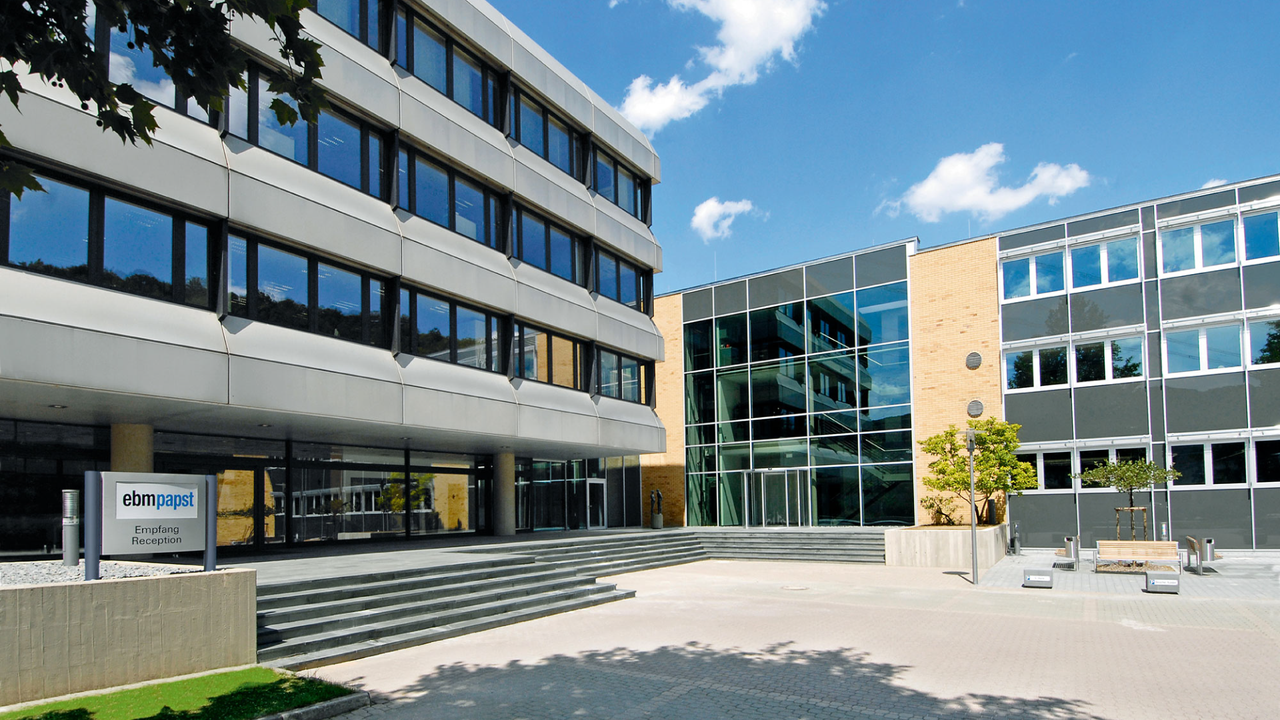What is the significance of the utilization level in fan technology? Better utilization of the possibilities provided by geometry and drive functionality makes top values for energy efficiency and noise reduction possible. Optimum utilization means getting the maximum air performance out of the space in which a fan is installed; here, impeller and nozzle geometry are the most important characteristics. As we always have, we’re cooperating with research institutes to leverage significant potential in aerodynamics and aeroacoustics – especially for impellers. Disruptive innovation – what is that? Whenever scientific insights lead to new technological solutions, innovations usually have a disruptive effect, meaning that there are abrupt changes. An example is the shift from magnetic storage on floppy discs to optical storage on CDs. The next shift was to the USB flash drive with data storage in the crystal structure of silicon. With each shift, completely different technologies come into play. In contrast, for wheels on vehicles there are currently no disruptive innovations to be expected since the wheel maintains the distance to the pavement while also providing traction. All other possibilities are much more complicated and inefficient; the proverbial wheel would have to be reinvented in order to qualify as a disruptive innovation. Do you see any disruptive innovations ahead in fans or drive engineering? The situation for fans is similar to that for wheels; there are no disruptive innovations in sight. The most effective solution is to generate air performance through the pressure change caused by rotors. But there is still plenty of efficiency and noise potential to be exploited. In addition, relatively new fields such as connectivity and the Internet of Things offer potential for new applications using intelligent networking. One of the new possibilities is central electronics. When is that worthwhile? Central control makes sense when multiple electrical consumers are installed in a product, as in clothes dryers, heat pumps, refrigeration equipment, etc. Here the potential is in power electronics and EMC, and there are additional synergies in commutation processes and closed-loop control. The benefits are higher system energy efficiency and the avoidance of redundancy. And how is connectivity achieved? On the circuit board with the central electronics, there is also an intelligent control system using microprocessors and embedded systems. These processors enable connection to the outside world for needs-based power demand, service notifications, monitoring of operating states, etc. In higher-level systems, such as when many devices are involved, additional efficiency benefits are realized with needs-based control systems. New business models can originate in this fashion. With its acquisition of the Spanish electronics manufacturer IKOR in January 2016, ebm‑papst expanded its electronics and systems capabilities. What benefits do you expect from the transaction? The advantage of global electronics production was our main reason for acquiring a majority interest in IKOR. Now we can supply our customers with locally produced electronics at their various locations worldwide, an important component of our "local-for-local" strategy – in other words, being able to produce in our markets for our markets. IKOR also has technological expertise in connectivity, which we can also put to work in our overall strategy. You’re working to found an institute for electric drives. What’s the status? Research in electromagnetism and electronics as it relates to measurement and control is very important for us. It helps us to continually improve the functionality, economy and efficiency of our products such as drives for fans, valves and automation systems. We also want to strengthen the local university. In November 2015, we reached agreement with the University of Heilbronn and the Ministry of Science, Research and the Arts of the German state of Baden-Württemberg on the institute’s activities and responsibilities in a memorandum of understanding. The institute will be located in Künzelsau and will provide space for laboratories and seminars and offices for visiting researchers. The urban planning phase is already finished. ebm-papst will sponsor an architectural design contest to determine the design of the institute’s teaching facilities and dormitories. That will take place this fall. In which fields will the institute be active? As stipulated in the memorandum of understanding, it will focus on three fields. First, aspects of motors, especially including thermo- and electrodynamic phenomena as well as electromagnetic and mechanical phenomena related to electric drives. This field also includes motor design and construction. The second field will involve control and regulation aspects. Topics of research will include power electronics, taking electromagnetic compatibility into consideration, and embedded systems for open- and closed-loop control of electric drives and their interconnection with surrounding systems. These two fields are complemented by the third, in which economic aspects are to play a role. Here the focus will be on estimating and calculating manufacturing and project costs. It’s important to us that students get industry-related education, so considerable emphasis will be placed on practical training. At the same time, transfer projects can be carried out at the institute by businesses (applied research). The questions were answered by Dr. Bruno Lindl, Managing Director Research and Development at the ebm-papst Group.

